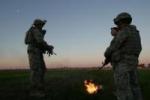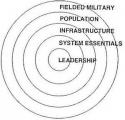There are in deed few grey areas in law of war. You have the 1907 La Haye law of war + disarmament treaties + Geneva Convention and additional protocols. That is all! And it is enough. US laws are not recognised internationally, it is a fact. After you can play on the weapons you use like Israel but I would not advise to risk too much on that side.They can't get clear answers in a timely manner on their left and right limits to determine what is and isn't permissiable by law (who's law, what law, but wait, we have another law that allows this...).
Then comes the judgements of international court for Yougoslavia, Rwanda and the Court of Rome… Their articles, especially the Status of Rome gives the definition of their jurisdiction and mandate. (Definition of a war crime, genocide, crime against humanity...). And previous judging will tell you where lies the responsibility of the soldier and the commander during operation. One of them even states and gives the juridical definition of what is a conflict.
The basic is the definition of a combatant is: an organised group of armed persons with a chain of command. No need of uniform, no need of doctrine, political statement or what ever. The simple thing is that does apply to all is war zone. You are conducting military operations: then you are in a war zone. You are conducting a civilian counter terrorist operation: then you are in a civilian zone. It is quick and short but if you have this in mind, then it helps a lot to avoid doing stupid stuff.
The problem comes to unarmed active supporters. They do not fall under the definition of combatant. They fall under Geneva Conventions as civilians to be treated with respect but, as stated in the Geneva Convention: civilian judiciary still applies.
Someone that is conducting active intelligence or logistical support to insurgents or terrorist groups or bandits is accountable in front of a civil trial.
Also, the active participation of civilian and mercenaries are included into Geneva conventions.
As I said previously, killing the person is not forbidden as you may extend the definition of active participation to military operation but could be counter productive. But putting such people on trial offers them a tribune, you will react. Yes and that is the point because it also gives you a tribune to show that you do respect rule of law (what you are fighting for, your cause).
Common sense as a lot to do here. You kill a woman with 10 kids because one of them (including the woman) is giving details on your movements… Then the symbol is worst than the benefits. You arrest the one that is involved (including the woman) then the benefits and the symbol are on your side.
But I would agree with Slapout 9: targeting the physical properties is easier and much easier to handle legally.
But here again, you destroy the computers of a cybercafé... fine. You kill all the heads of cattle of a family/village... Not fine. You cannot destroy what is the basic source of survival of people. Also, this will be interpreted as collective punishment which is banned by GC + Law of War.
Israel applied that policy (more or less...) concerning palestinian state capacity to function. They did destroy physically all walls, computers, chairs, tables...
Common sense again… Make sure the symbol stay on your side. Closing a shop with legal documentation and having immediate presentation to a judge with hard evidence will have a deeper positive impact than destroying the place.
I would say that for civilian, the statement 10-2=20 does also apply. As simple as that.
And do not forget that where ever you are, the domestic laws of the host country are the one which will apply first after Geneva Convention and La Haye law of war.













Bookmarks